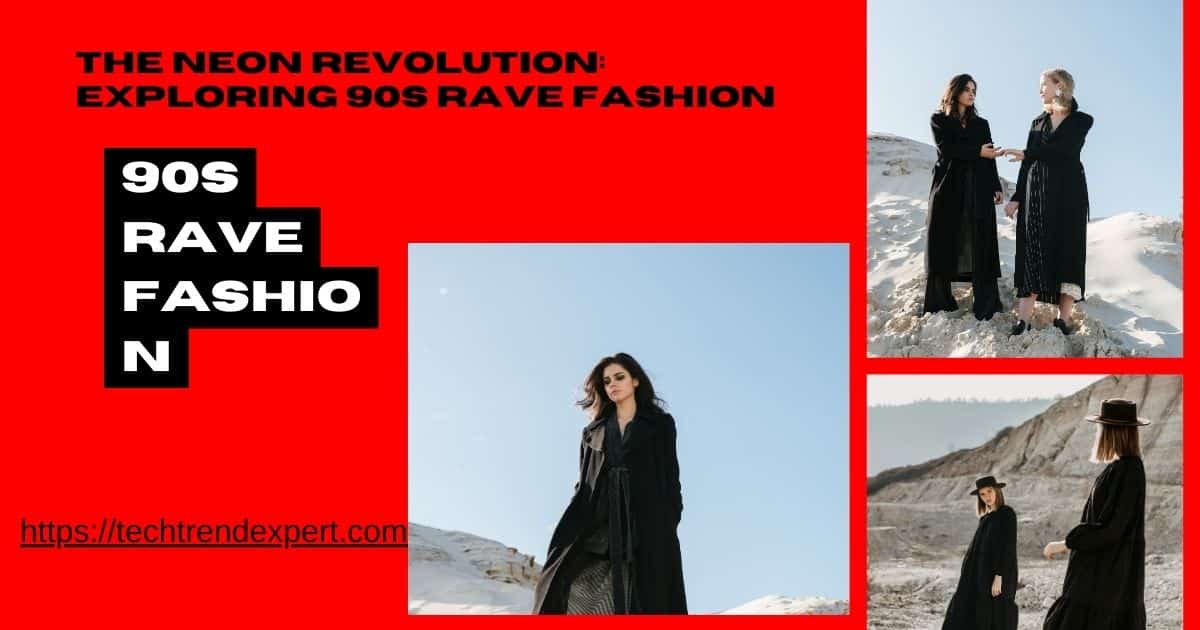
90s rave fashion was a bold and vibrant style that emerged as a subculture within the larger dance and electronic music scene. It was characterized by its colorful and eccentric clothing choices, which represented the free-spirited and rebellious nature of the rave culture. Ravers, the enthusiasts of this fashion, used their outfits as a form of self-expression and a means to stand out in a crowd filled with pulsating music and neon lights.
The Cultural Significance of 90s Rave Fashion
The 90s rave fashion was more than just a trend; it was a cultural movement. Rave culture itself was about unity, music, and freedom of expression, and the fashion was a tangible expression of these values. The use of neon and fluorescent colors symbolized the celebration of life, with ravers believing that bright colors could help elevate their spirits. Baggy clothing was not just a style choice but also a practical one for dancing the night away. The unconventional nature of the fashion represented a rejection of societal norms, promoting the idea that you could be whoever you wanted to be.
Key Elements of 90s Rave Fashion
Neon and Fluorescent Colors
Neon and fluorescent colors were the hallmark of 90s rave fashion. These bold, eye-catching hues weren’t just for clothing; they often extended to accessories, body paint, and even hair. Ravers embraced these colors as a way to create a sense of euphoria and to stand out under the neon lights of the dance floor.
Baggy Clothing
Baggy clothing was not only a fashion statement but also a practical choice for ravers. The roomy, comfortable attire allowed for unrestricted movement on the dance floor, enabling them to dance freely and energetically all night long.
Crop Tops and Bralettes
While baggy clothing was popular for the lower half, crop tops and bralettes were all the rage for the upper body. They added a touch of sensuality and kept ravers cool amidst the energetic atmosphere.
Platform Shoes
Platform shoes, often called “rave boots,” were another iconic element of this fashion. They provided added height and comfort, making them perfect for dancing. Some even had LED lights in the soles, adding to the visual spectacle.
Accessories: Glow Sticks, Bandanas, and Visors
Accessories were crucial in completing the rave look. Glow sticks were twirled in the air, adding to the visual spectacle of the dance floor. Bandanas and visors not only shielded ravers from the elements but also added to the overall style.
Patterns: Tie-Dye and Smileys
Patterns like tie-dye and smiley faces were synonymous with the carefree and whimsical spirit of the rave culture. These patterns were not just on clothing but also appeared on flags, posters, and even body paint, creating a unified, joyful atmosphere.
Iconic Clothing Items
UFO Pants
UFO pants, often referred to as “rave pants,” were the epitome of 90s rave fashion. These baggy, multi-pocketed pants were both functional and stylish, providing a distinctive look and plenty of storage space for small rave essentials.
Phat Pants
Phat pants were another variation of baggy pants that became iconic within the rave scene. They featured wide legs and often had reflective strips, making them shine brightly under the dance floor lights.
Kangol Hats
Kangol hats, made popular by artists like LL Cool J and Samuel L. Jackson, found their way into rave culture. These hats added a touch of hip-hop style to the eclectic mix of rave fashion.
Oversized Hoodies
Oversized hoodies were not just comfortable but also a versatile piece of clothing in the rave wardrobe. Ravers could layer them over crop tops or bralettes for a cozy and stylish look.
Kandi Bracelets
Kandi bracelets were a form of self-expression and a means of connection among ravers. These beaded bracelets were often given or traded, symbolizing friendship and unity within the rave community.
Makeup and Hairstyles
Bright and Bold Makeup
Rave makeup was all about being daring and experimental. Neon eyeshadows, glitter, and face gems were the norm. The bold makeup choices not only enhanced the overall look but also allowed ravers to express their individuality.
Technicolor Hair
Hair was another canvas for self-expression. Ravers often dyed their hair in a rainbow of colors, from electric blue to neon pink. It was a way to stand out and be part of the vibrant atmosphere.
Glitter and Face Paint
Glitter and face paint were not just for kids; they were essential for ravers of all ages. Face paint and body glitter became a way to transform oneself into an otherworldly being, reflecting the magical experience of the rave.
V. Influences and Inspirations
Music and Rave Culture
The music played a significant role in shaping rave fashion. The electronic and dance music of the 90s inspired the free-spirited, energetic style. The beats, rhythms, and lyrics of the music were reflected in the vibrant clothing choices and overall exuberance.
Pop Culture and Celebrities
Pop culture played a substantial role in the adoption of rave fashion. Celebrities who embraced this style, like Madonna and the Spice Girls, made it more mainstream, influencing a broader audience.
Rebellion and Anti-Establishment
Rave culture, including the fashion, was a form of rebellion. It rejected the conformity and rigidity of mainstream society and instead celebrated individuality and non-conformity.
Contemporary Revival
Nostalgia and Retro Fashion
The 90s rave fashion has experienced a resurgence in recent years due to nostalgia. People who experienced the rave scene in the 90s, as well as a new generation, are rediscovering and embracing this iconic style.
Modern Interpretations of 90s Rave Fashion
Fashion designers and brands have been inspired by the 90s rave culture, incorporating its elements into their collections. Modern interpretations blend the old with the new, creating a fusion of retro and contemporary.
Influence on Subcultures and Festivals
The impact of 90s rave fashion can still be seen in various subcultures, such as the Burning Man community and music festivals like Tomorrowland. The bold, expressive style continues to inspire and influence these events.
Conclusion
Lasting Impact of 90s Rave Fashion
The 90s rave design was something other than a passing pattern; it left an enduring effect on the universe of style and self-articulation. Its impact can in any case be found in current design and subcultures, epitomizing the soul of solidarity and singularity.
The Evolution of Fashion and Subculture Over Time
As fashion and culture evolve, the 90s rave fashion remains a touchstone, reminding us of a time when people celebrated freedom, music, and individuality through vibrant and unapologetic style. It serves as a testament to the power of fashion to reflect and shape culture.








